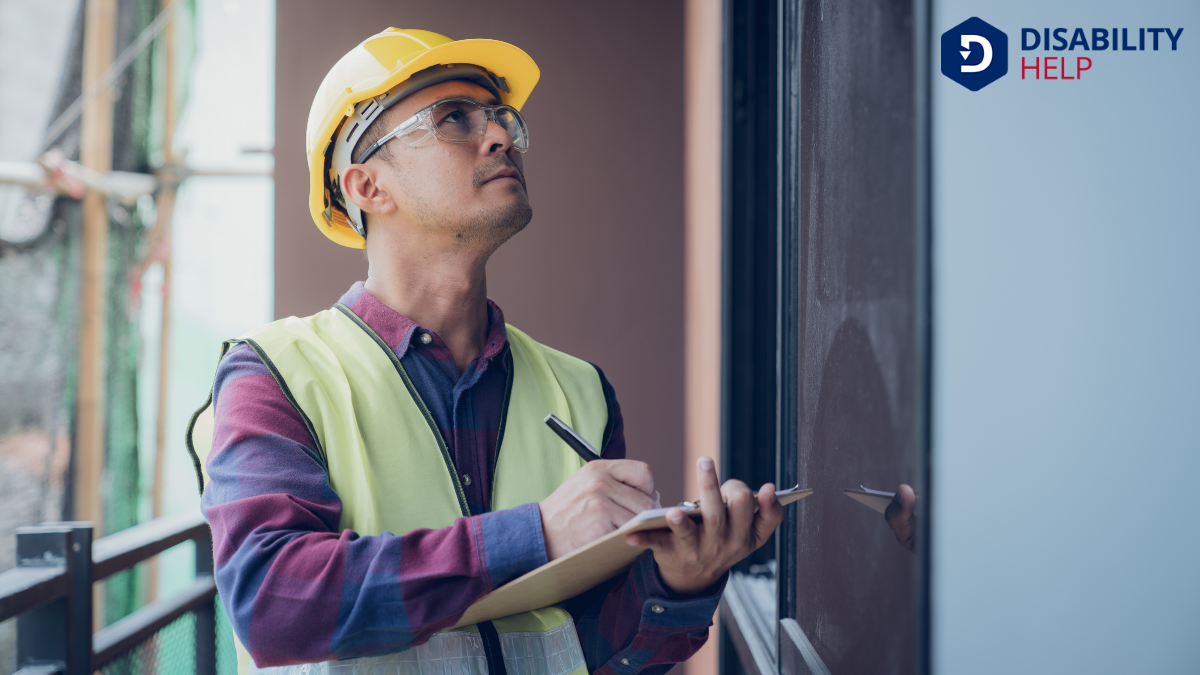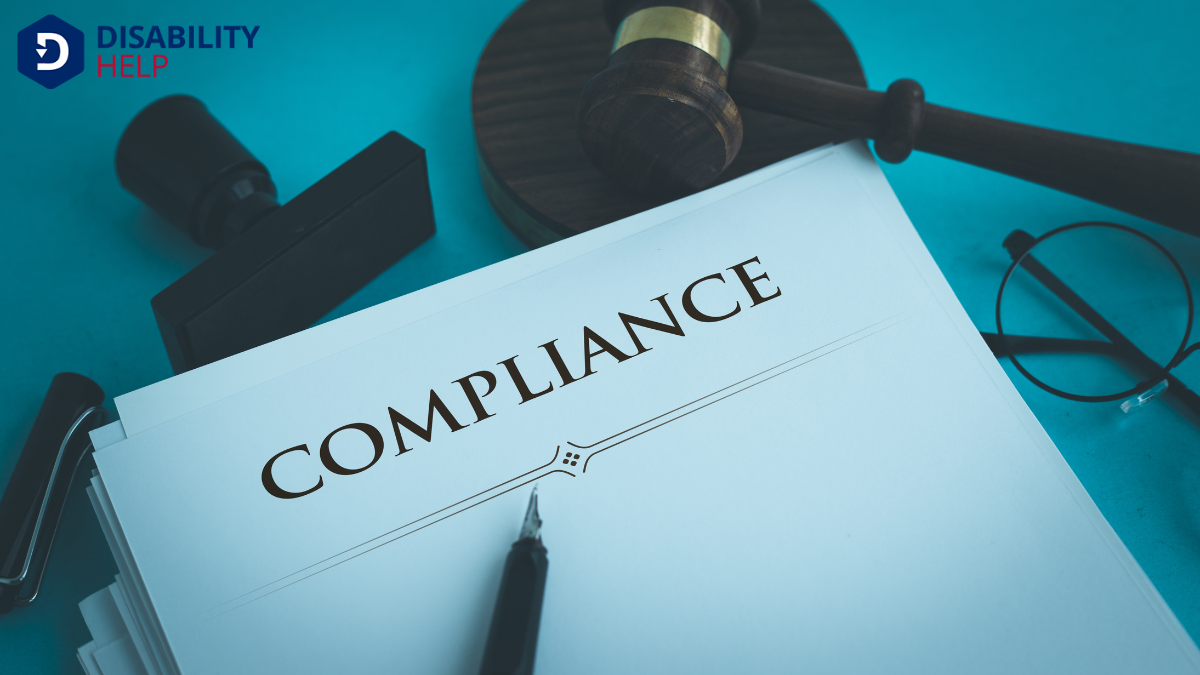When considering accessibilityThe design of products, devices, services, or environments to be usable by people with disabilities.... standards in new construction, we're faced with a complex web of regulations and responsibilities. Federal, state, and local codes lay the groundwork, but it's architects and designers who bring these standards to life. They collaborate with consultants and inspectors to guarantee compliance. Despite this framework, challenges persist. How do we make certain that every new building truly meets the needs of those with disabilities? Let's explore what's working and what's not in this crucial area.
Key Takeaways
- Federal and state regulations provide a framework for enforcing accessibility standards in new constructions.
- Regular inspections during the construction process help ensure compliance with accessibility requirements.
- Architects and designers are responsible for integrating accessibility criteria into their plans.
- Collaboration with accessibility consultants and regulatory bodies aids in meeting accessibility standards.
- Innovative technologies like smart sensors and AR enhance enforcement and compliance efforts.
Overview of Accessibility Standards and Regulations
When we talk about accessibility standards and regulations, we're focusing on creating inclusive spaces that cater to everyone, regardless of their physical abilities.
These standards guarantee that new constructions are designed to be accessible and usable by people with a range of disabilities.
We often encounter guidelines that specify requirements for ramps, door widths, and signage.
The Role of the Americans With Disabilities Act (ADA)

The Americans With Disabilities Act (ADA)A U.S. law that prohibits discrimination against individuals with disabilities in all areas of publi... plays an essential role in shaping how new constructions meet accessibility standards. As we all know, the ADA requires that public spaces be accessible to everyone, including those with disabilities.
It sets clear guidelines to guarantee buildings are designed and constructed in ways that accommodate all users. By doing so, the ADA helps us create inclusive environments where everyone can participate equally.
We often find that the ADA outlines specific requirements for elements like ramps, doorways, and signage. This guarantees that new constructions aren't just compliant but genuinely accessible.
It's our responsibility to understand these standards thoroughly to implement them effectively. By adhering to the ADA, we help foster a society that's more inclusive and accessible for all.
Federal vs. State and Local Building Codes
Maneuvering the landscape of building codes requires an understanding of both federal and state/local regulations.
Federal standards, like those set by the ADA, provide a baseline for accessibility requirements. However, state and local codes can vary, sometimes offering more stringent standards.
Let's break it down:
- Federal Standards: These are the minimum guidelines that all new constructions must meet, guaranteeing accessibility nationwide.
- State Codes: States might adopt federal standards or implement stricter requirements to address specific regional needs and challenges.
- Local Regulations: Local jurisdictions can further tailor codes to take into account community-specific factors, such as geographic and demographic needs.
Recognizing these layers helps us guarantee that new constructions not only comply but also meet the diverse needs of all users.
The Responsibilities of Architects and Designers
As architects and designers, we play an essential role in ensuring new construction meets accessibility standards.
It's our responsibility to comply with regulations and prioritize inclusive designDesign that considers the needs of the widest range of users, including people with disabilities, fr... practices.
Let's explore how we can create spaces that are accessible to everyone.
Compliance With Regulations
When architects and designers tackle new construction projects, guaranteeing compliance with accessibility regulations becomes a fundamental responsibility.
We must familiarize ourselves with the latest standards to ensure our designs are inclusive and meet legal requirements. Here’s how we can achieve this:
- Stay Informed: Regularly update ourselves on local, state, and federal accessibility lawsLegislation that mandates the removal of barriers and ensures access for individuals with disabiliti.... This knowledge helps in creating plans that adhere to required standards.
- Collaborate: Work closely with accessibility consultants and other experts to make sure that every aspect of the design meets accessibility criteria.
- Review and Revise: Conduct thorough plan reviews and be open to revisions. This proactive approach minimizes risks and guarantees the final construction aligns with regulations.
Inclusive Design Practices
Although designing for accessibility is a legal obligation, it’s also a moral imperative for architects and designers to embrace inclusive design practices.
We must consider the diverse needs of all individuals, ensuring our spaces are welcoming and usable for everyone.
This means we should go beyond mere compliance, actively seeking innovative solutions that enhance accessibility.
The Role of Building Inspectors and Code Officials

Building inspectors and code officials play an essential role in guaranteeing new construction projects meet accessibility standards. They help us navigate complex regulations and guarantee our buildings are inclusive.
First, they review plans to confirm they comply with local accessibility codes before construction begins. This initial check prevents costly redesigns.
Second, they conduct on-site inspections throughout the construction process. By observing work as it progresses, they can identify and correct deviations from approved plans.
Finally, they issue final approvals to certify the building meets all accessibility requirements before it opens to the public.
Their expertise guarantees that new structures are safe and accessible, enhancing the quality of life for everyone.
Let's appreciate their crucial contribution to creating inclusive communities.
Private Sector Accountability in Accessibility Compliance
Ensuring accessibility compliance isn't just a governmental responsibility; the private sector also plays a pivotal role.
As developers and designers, we must prioritize inclusivity in every project. It's our duty to understand and implement the necessary standards, ensuring spaces are accessible to everyone.
We can't overlook the importance of familiarizing ourselves with the legal requirements and best practices in accessibility.
The Process of Obtaining Accessibility Certifications
Understanding our role in accessibility compliance naturally leads us to contemplate the process of obtaining accessibility certifications.
To guarantee our new construction projects meet accessibility standards, we need to navigate this process efficiently. Here's a simplified approach:
- Initial Assessment: We start by evaluating our project's design plans against established accessibility guidelines. This step identifies areas needing adjustment.
- Documentation and Application: Next, we compile necessary documentation, including design plans and accessibility features, and submit our application for review.
- Review and Certification: Finally, an accredited body reviews our submission. If it meets the required criteria, they issue the accessibility certification, confirming compliance.
Enforcement Challenges and Common Compliance Issues

When traversing the domain of accessibility compliance, we often encounter enforcement challenges and common compliance issues that can complicate our efforts. One significant hurdle is the inconsistent interpretation of regulations across different jurisdictions, leading to confusion and non-compliance.
Additionally, some builders may prioritize cost savings over accessibility, resulting in substandard accommodationsModifications or adjustments in healthcare settings to support patients with disabilities. that don’t meet the required standards. The lack of regular inspections and follow-up can also allow non-compliance to persist unnoticed.
Furthermore, outdated knowledge among construction teams about evolving standards can further exacerbate these issues. We must work collaboratively with regulatory bodies, builders, and advocacyThe act of arguing in favor of, supporting, or defending the rights and interests of individuals or ... groups to guarantee compliance, fostering environments where accessibility isn't just a requirement but a fundamental aspect of design and construction.
Understanding these challenges is essential to making strides in accessibility.
Innovations and Future Directions in Accessibility Enforcement
As we look to the future of accessibility enforcement, emerging technologies hold great promise in enhancing compliance and ensuring inclusivity.
From smart building systems to advanced monitoring tools, these innovations can transform how we approach accessibility in new construction.
Additionally, upcoming legislative changes are set to strengthen these efforts, providing a robust framework for more effective enforcement.
Emerging Accessibility Technologies
In recent years, we've seen a surge in innovative accessibility technologies that promise to transform how we enforce accessibility standards in new constructions.
These advancements aren't just novel but also practical, ensuring that our buildings meet the needs of everyone.
Let's explore some key technologies:
- Smart Sensors: These can detect obstacles and provide real-time feedback to construction teams, ensuring compliance during the building process.
- 3D Printing: This technology allows for the creation of customized accessible features, like tactile maps and braille signage, which can be integrated seamlessly into building designs.
- Augmented Reality (AR): AR can visualize potential accessibility issues in virtual models before construction begins, allowing for proactive adjustments.
Legislative Advances Impact
Although technology plays a significant role in transforming accessibility standards, legislative advances also shape the way we enforce these standards in new construction.
We’ve seen how governments worldwide are increasingly committed to making buildings more accessible for everyone. New laws and amendments keep evolving, pushing us towards a more inclusive society. By mandating accessibility in public and private spaces, they guarantee that everyone, regardless of ability, can access facilities without barriers.
These legislative changes often result from advocacy and research, highlighting the need for constant improvement.
As we move forward, it’s vital to stay informed about these evolving laws. Understanding them helps us secure compliance and anticipate future requirements, ultimately creating environments where everyone feels welcome and included.
Frequently Asked Questions
How Do Accessibility Standards Apply to Historic Buildings?
We guarantee accessibility standards in historic buildings by balancing preservation with necessary updates. Our approach involves collaborating with preservationists and using creative solutions to maintain historical integrity while enhancing accessibility for everyone. Let’s embrace inclusivity together.
What Are the Penalties for Non-Compliance With Accessibility Standards?
If we don't comply with accessibility standards in new construction, penalties can include fines, legal action, or mandatory modifications. It's essential we prioritize accessibility to avoid these consequences and guarantee inclusivity for everyone using the space.
How Can Tenants Report Accessibility Violations in New Buildings?
We can report accessibility violations by contacting local building authorities or using online platforms provided by government agencies. It's essential to document issues with photos or videos to support our claims and help guarantee compliance in new buildings.
Are Accessibility Standards Applicable to Temporary Construction Structures?
We acknowledge your curiosity about temporary construction structures. Yes, accessibility standards do apply. It's essential for these structures to be inclusive, ensuring everyone can navigate safely. Let's advocate for universal access in all construction projects, temporary or permanent.
How Do Accessibility Standards Address Outdoor Areas and Landscapes?
Let's explore how accessibility standards guide us in designing outdoor areas and landscapes. They guarantee pathways, slopes, and recreational spaces accommodate all users. By adhering to these guidelines, we create inclusive environments for everyone to enjoy.
Conclusion
In our journey through accessibility standards in new construction, we've seen how federal, state, and local regulations work together to guarantee compliance. We've explored the vital roles architects, designers, and inspectors play in this process. Despite challenges, innovative technologies are paving the way for more effective enforcement. By staying informed and embracing new tools, we can create a more inclusive built environment, making sure everyone has access to the spaces we design and build. Let's continue this important work together.






